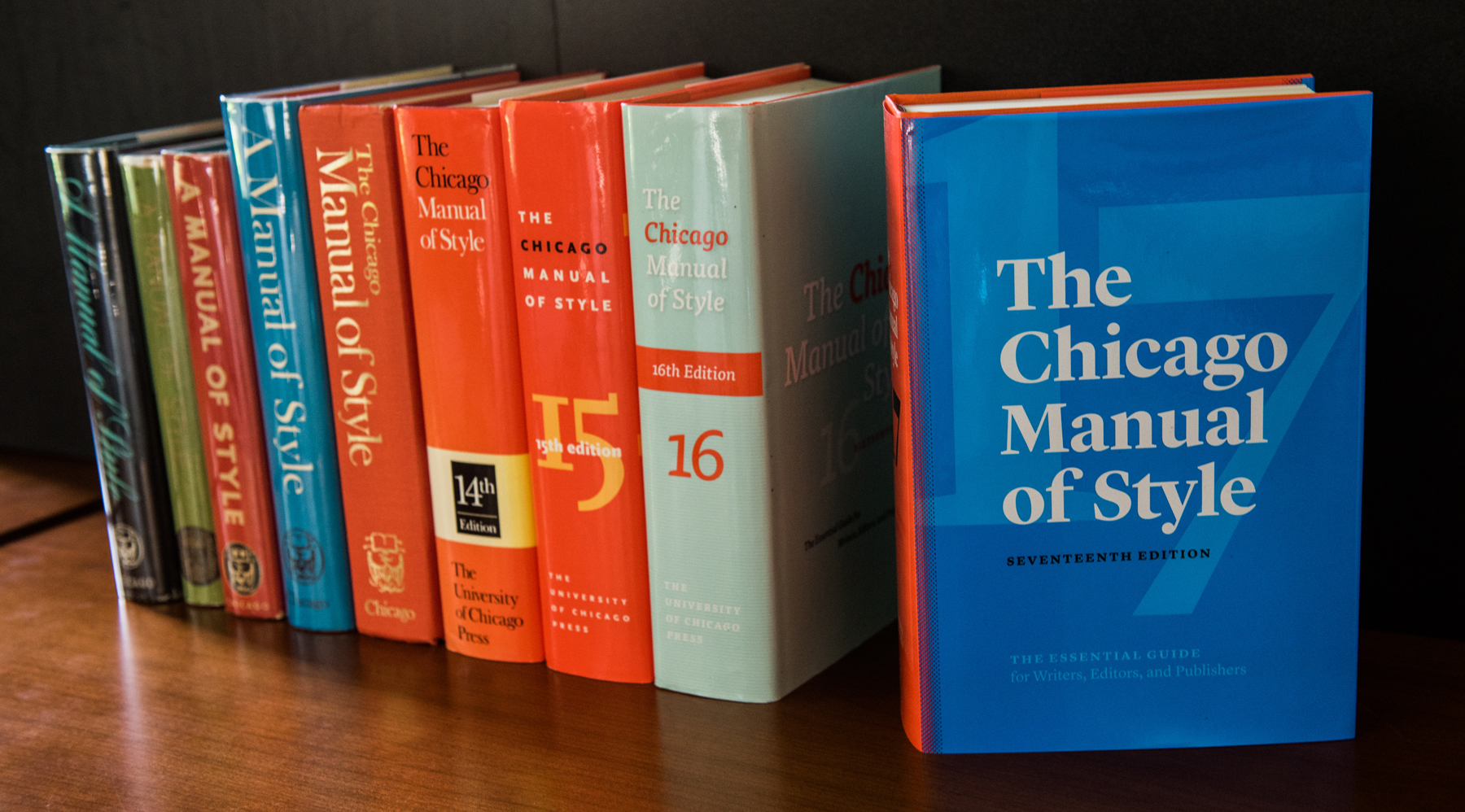The purpose of this guide is to make citation formats easily available for undergraduate students to reference. This guide has an emphasis on MLA Format but also includes Chicago Style and APA format as well as tips for working through writer's block.
Give credit where credit is due! It is important to cite a source to avoid plagiarism. Citing books, articles, and media as references for your written work allows you to include and expand upon credible and scholarly authors' works. Here, we will be focusing on in-text citations for books, articles, media, electronic resources, lectures and presentations. If you find that the citation you are looking for is not here, please refer to the external links provided under the "resources" section below.
When citing from print source such as a book, include the author(s) and page number. MLA in-text citation calls for parenthetical citations. There are a variety of way to do this. See the sample sentences below!
Photo by Sharon McCutcheon on Unsplash
Ex. 1: Citing a book with one author.
Mr. Falkland reveals his feelings of despair to Caleb when he yells, "I began life with the best of intentions and the most fervid philanthropy; and here I am—miserable—miserable beyond expression or endurance" (Godwin 114).
Godwin reveals Mr. Falkland's feelings of despair by stating, "I began life with the best of intentions and the most fervid philanthropy; and here I am—miserable—miserable beyond expression or endurance" (114).
Ex. 2: Citing an article with more than one author.
The authors' claim "nitrogen emissions in California are 3-10 times greater than in the other ten states" (Fenn et al. 2).
Fenn et al. claim "nitrogen emissions in California are 3-10 times greater than in the other ten states" (2).
Ex. 3: Citing a source with an unknown author.
Flooding and cliff erosion reduce the amount of “nearshore habitats such as rocky intertidal areas and sandy beaches” (Climate Action Plan 56).
According to the Climate Action Plan, flooding and cliff erosion reduce the amount of “nearshore habitats such as rocky intertidal areas and sandy beaches” (56).
When citing media resources, include the creators of the media and the title of the media resource.
Photo by Denie Jans on Unsplash
Ex. 1: Citing a film: include title and director.
Now, the genre of film was redefined by Dziga Vertov in Man with a Movie Camera.
Vertov's film includes various scenes where the cameraman is in the shot filming: when he is filming the women in a car that is driving next to them, when he is filming the man that directs traffic, when the cameraman is on top of a camera with his own camera (“A Man”).
When citing an electronic resource, include the author and title. If there is no author, include the title in the parenthetical if it is not included in the sentence.

Image from GMIT Library
Ex.1: Citing from a website, include the title of the article. Many times, there is no author therefore, a parenthetical is not needed when the title is included in the sentence. If the title is not included in the sentence, add the title in a parenthetical at the end of a sentence.
The chaparral ecosystem is characterized by "drought and fire-adapted evergreen shrubs growing in coarse-textured soils with limited water holding capacity" ("Chaparral").
The national park service website is used to learn about different ecosystems. For instance, "Chaparral" has a detailed description of the characteristics found within the vegetation community in the Santa Monica Mountains.
Citations for lectures are subject to professors' preferences. Be sure to check in with how your professors' would like you to cite their lectures. Most commonly, professors' require last name and lecture date or number.
Photo by Miguel Henriques on Unsplash
Ex. 1: When citing lectures, include the speaker and the lecture date.
Sonnet 116 makes the point that love is constant, spiritual, and platonic yet when Professor Marno posed the question: “what is love?” during A Midsummer Night’s Dream lecture, love begins with the physical and biological—the eyes—and progresses to the realm of fantasy, passion, and even serves as an instrument of control (2/26).
Expressionists were against war; they were deemed crazy, considered Bolsheviks, communists, insane, and Jewish even if the artists were not (Yurchak 2/28).
External links to more examples for in-text citations.
Owl Purdue MLA In-text Citations
Berkeley College MLA Citations Brochure
Ask style.mla.org a Citation Question
Footnotes are used in MLA format to provide additional information. The primary uses for footnotes in MLA format are content and bibliographic notes. Footnotes are indicated by a subscript number at the end of a clause, period, or dash. Footnotes are added at the bottom of the page. Please refer to the "resources" section below for external links to more examples.
A content note is used to justify, clarify, or further support your claim. It is a reference to more information that is not included in your paper.
Ex.1: The note should include the author and relevant page numbers, if there is no author, include the title and page number.
However, when looking at various illuminated manuscripts, the image showcases the paradoxes of avarice through the garments and added chest of gold coins.1
Note
A bibliographic note is used to cite various sources or reflect upon your sources.
Ex. 1: The note should include the author and relevant page numbers, if there is no author, include the title and page number.
Avarice is depicted in a peachy shirt and blue skirt instead of a complete pink garment and the artist took the liberty of adding a half open chest with coins showcasing the importance of monetary value over material gain.1
Note
External links to more examples for footnotes.
The works cited goes at the end of the paper on a separate page. The page title should be centered and say Works Cited. The works cited page is a list of all the sources you cited in your paper. They are organized in alphabetical order and include: author, title, publisher, and publication year. Please refer to "resources" for more examples on how to format your works cited page.
Photo by Syd Wachs on Unsplash
Author last name, first name. Title of book. Publisher, Publication year.
Ex.1: One author
Schulz, Bruno The Street of Crocodiles. Penguin Classics, 1977.
Ex. 2: Two authors
Bruyn, Dieter and Heuckelom, Kris (Un)masking Bruno Schulz New Combinations,
Further Fragmentations, Ultimate Reintegrations. Rodopo B.V., 2009.
Ex. 3: Three or more authors
Wolfson, Susan, et al. The Romantics and Their Contemporaries: “The Rime of the
Ancient Mariner.” Pearson, 2012.
Ex. 4: Unknown author
Climate Action Strategy. County of Santa Cruz, 2017.
Title of film. Director, film studio, release year.
Ex.1: Grease. Directed by John Randal Kleiser, Paramount Pictures, 1978.
Ex. 1: Scholarly Article
Author's last name, first name. "Article title." Title of publication, volume, issue number, publication year.
Finn, Mary E. "The Ethics and Aesthetics of Shelley''s The Cenci." Studies in
Romanticism, vol. 35. no. 2, 1996.
Ex. 2: Website
Author. "Title of source." Title of container, Other contributors, Publisher, Publication date, Location.
Website with all information:
Marchand, Leslie A. "Lord Byron." Encyclopaedia Britannica,Encyclopaedia Britannica,
Inc., 15 Apr. 2020, https://www.britannica.com/biography/Lord-Byron-poet
Website with minimal information:
"Chaparral." National Park Service, 1 March 2015,
https://www.nps.gov/samo/learn/nature/chaparral.htm
Last name, first name. Lecture title, class, department, location, year lecture was given.
Marno, David. Lecture for Literature in English: Through Milton, Eng 45A, English
Department, University of California, Berkeley, 2018.
External links to more examples for Works Cited page and Bibliography.
The appendix should be added at the end of the paper but before the Works Cited page. Appendices should be organized in the order they appeared in your paper.
In-text citation
Ex. 1: An Image, include within the parenthetical at the end of the sentence "figure" abbreviated and the number.
Empire, on the other hand, stand imposingly in the courtyard creating a jarring contrast between the marble scruples and the black and purple terracotta bricks with the inscription "EMPIRE" on them (See Fig. 1).
Appendix page
For the caption of the image, include: figure number Author's name. Title of work. Year of Publication. Location.
Fig. 1 Elisabetta Benassi. Empire. 2018. Bricks. Palazzo Altemps, Rome, Italy.
Photo by Hannah Grace on Unsplash
The Chicago Style is used for humanities papers. It has two primary forms of citation that require footnote or end notes and a bibliography page. The Chicago Manual Style of Writing is available electronically via the UC Berkeley Library website.

Photo by Jean Lechat on Chicago Style Icons
External links for more information on Chicago Style.
Sample Paragraph with Footnotes and a Bibliography
Chicago Style: Footnotes and Bibliography
Owl Purdue: Chicago Style General Format
APA format is used for research papers; primarily scholarly work in the behavioral and social sciences fields. APA format includes a title page, abstract, main body, and references page.

Photo retrieved from All About Forensic Psychology
External links for sample papers and more information on APA format.